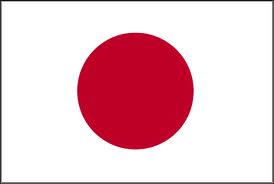 |
| Our "new" 2000 Nissan Liberty van. |
As you all know we've been getting around on foot, bicycle, train and base bus since arriving in Japan. This is how a majority of people here commute so we were within the norm. We weren't in a hurry to buy a car at first because we were in the lodge and it was easy to get around plus we had to wait until we finished our orientation class and got our drivers licenses (we can't buy a car here unless we both have a U.S. Forces license) before we could seriously start car shopping. We were loosely looking at cars shortly after we got here, but unfortunately our orientation class was very large (150+ people) so most of the cars at "The Lemon Lot" were being sold quickly. We were trying to be patient but carrying all those groceries via bicycle or on foot was getting a bit old, plus we had ordered a shiki buton (a cushion to go on top of the futon) that we needed to pick up from the local Homes store.
Justin was very persistent when car shopping. He was going to the lot many times during the week to test drive cars, or to see if there was anything new on the lot. One of the major problems we found when car shopping was that almost every car had been smoked in. Most of the cars on the lot were purchased at Japanese car auctions. While the Japanese are very health conscious about their weight and exercise, its not uncommon to see them smoking in their cars. This was something we were very opposed to because smoke is very hard to clean out of cars and the smell is hard to mask.
We also had discussions about what size of car to buy. Should we get a smaller 5 passenger car, or a small van with at least 7 seats for when we have to cart the kids' friends around or if company comes to visit us, etc? Luckily, Justin ended up finding and test driving the van we ended up buying. It had very low miles, is a 2000 (new for a used car here), and we have a little more JCI (Japanese compulsory insurance you have to have on your vehicles here) left. We paid a little more than we had originally planned but most of the used cars we were looking at ranged from $2,000-$3,500 USD. Not bad. Like I've mentioned before, even though people drive really "old" used cars here they are taken care of...in my opinion a lot better than back in the U.S.
There's a bit of a process before we could actually get the car keys. First, when you want to buy a certain vehicle you must go to your local police station. They have to physically come out to your house and measure the parking spaces..to make sure the car will fit. We've heard of people purchasing a car and having to turn around and sell it because it wouldn't fit into their parking space. We're pretty fortunate where we live because we have 2 parking spaces at our house. Many times the homes here only have one. After the measurements were done Justin had a little more running around to do at the licensing office before he met back up with the car dealer. We were lucky that the dealer was nice enough to deliver the car to our house.
I haven't driven the van yet but will probably try at some point. The traffic is pretty crazy here, plus the pedestrians have a tendency to step out into the street when you least expect it. It was wonderful to go to The Commissary last weekend and stock up on some food. I think we had about 7 bags of groceries!
1) American drivers are easy to spot in Japan because they have a Y on the left of their license plates.
2) American teenagers can take drivers training and get a permit on base. They have to log 6 hours of practice with a parent even though they cannot drive off base until age 18.
3) The tolls from Yokosuka to Tokyo cost around $70.00. If you rent a vehicle on base (which many people do) the rental fee includes vouchers you can use on the toll roads.






